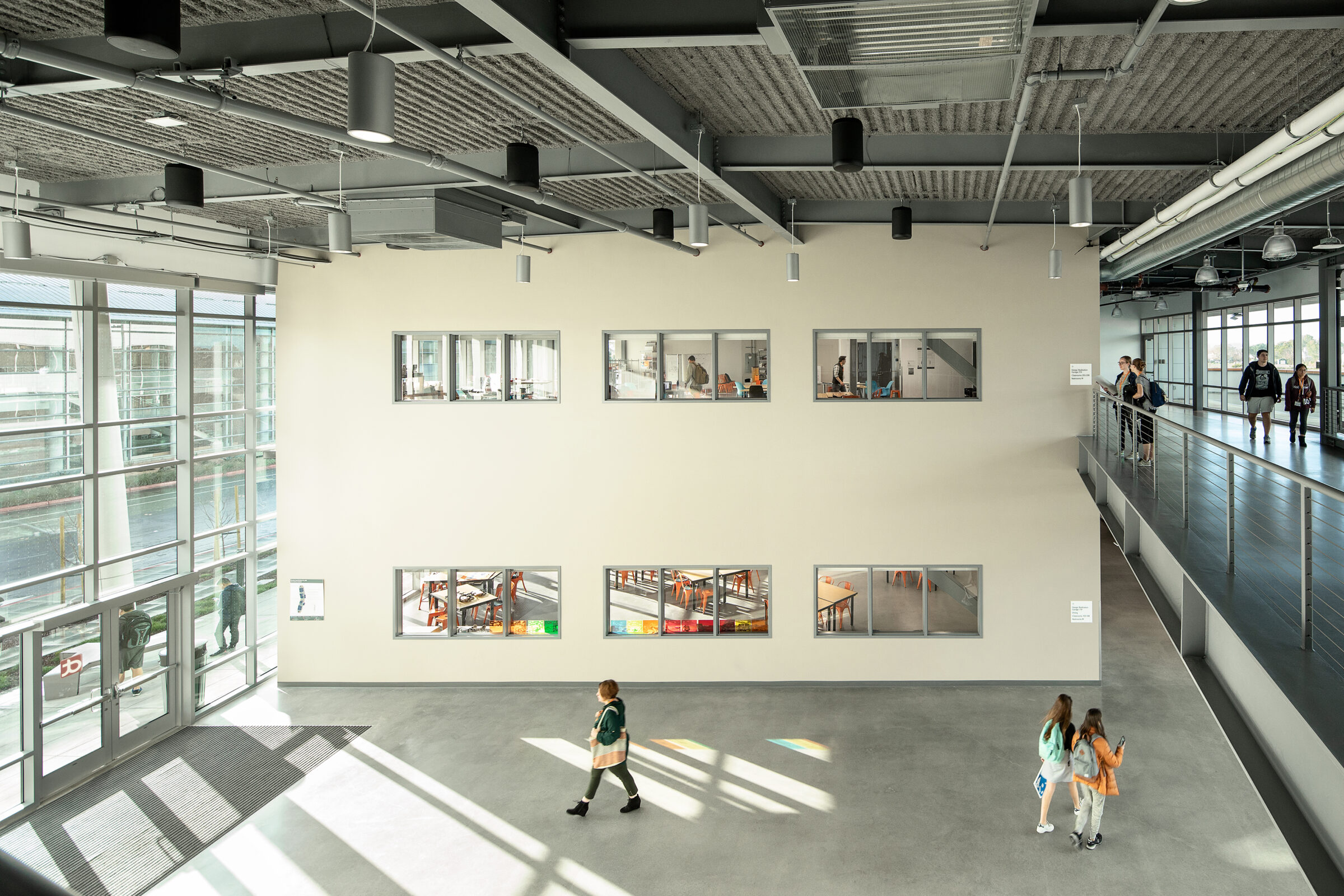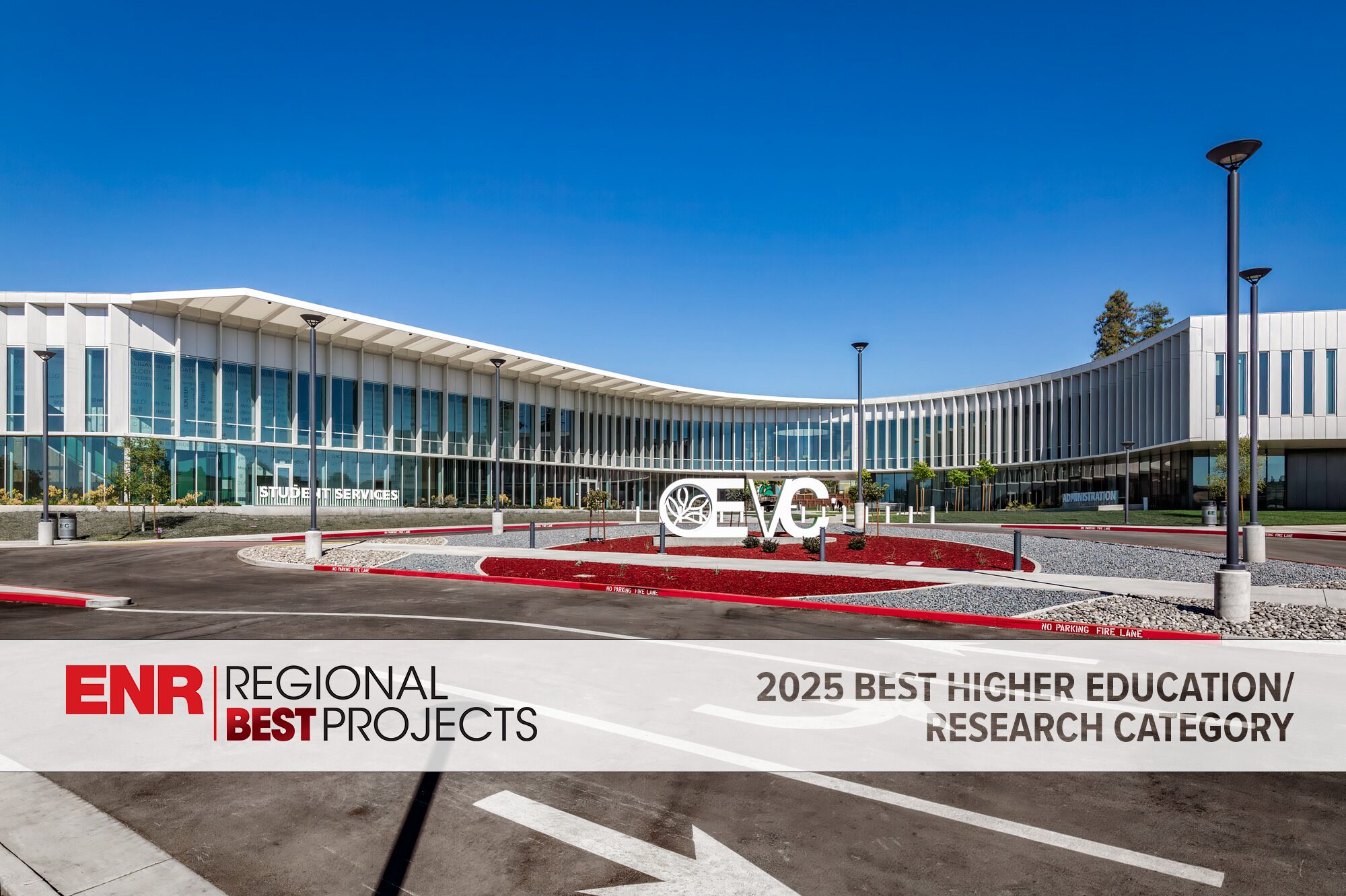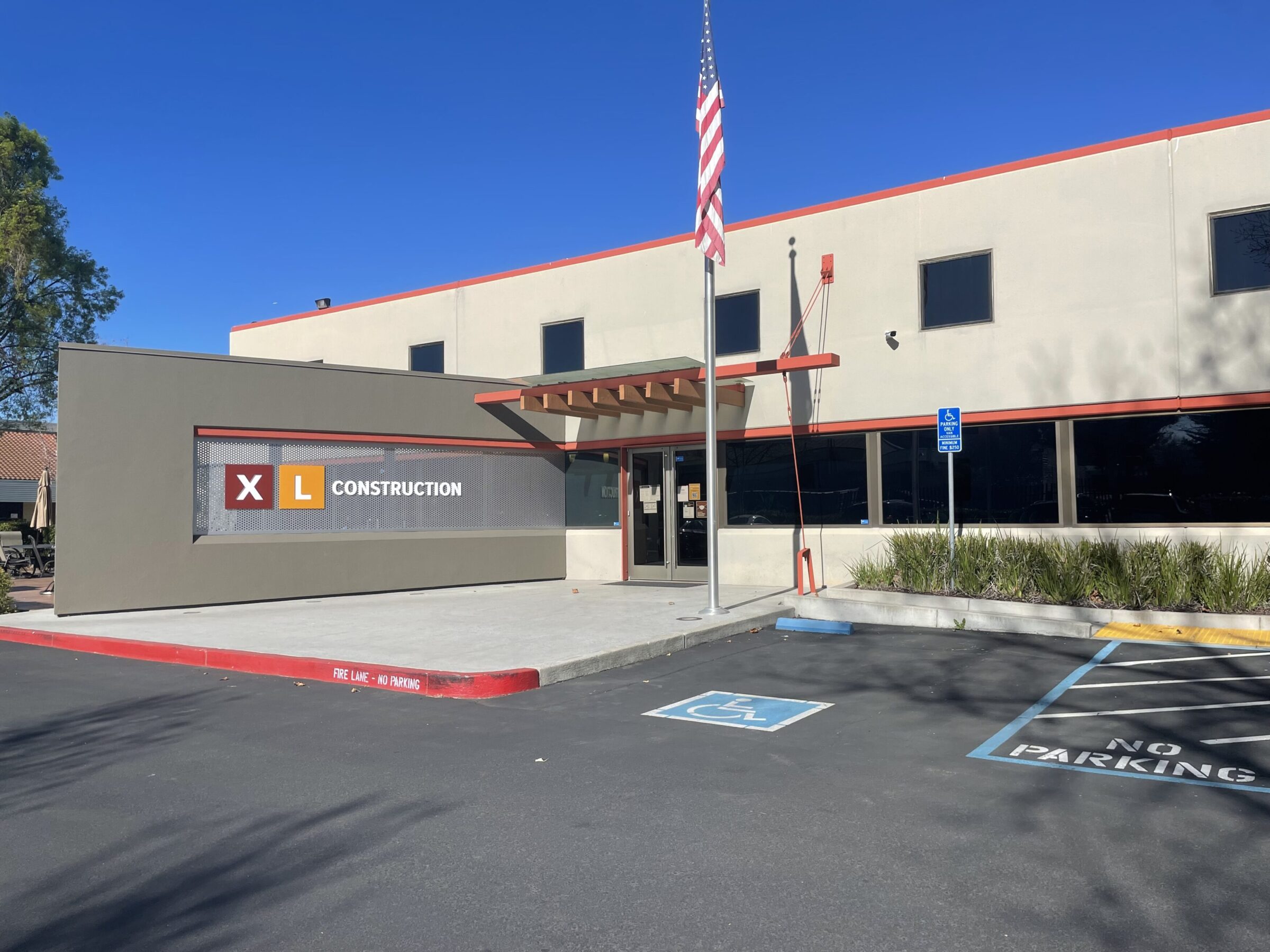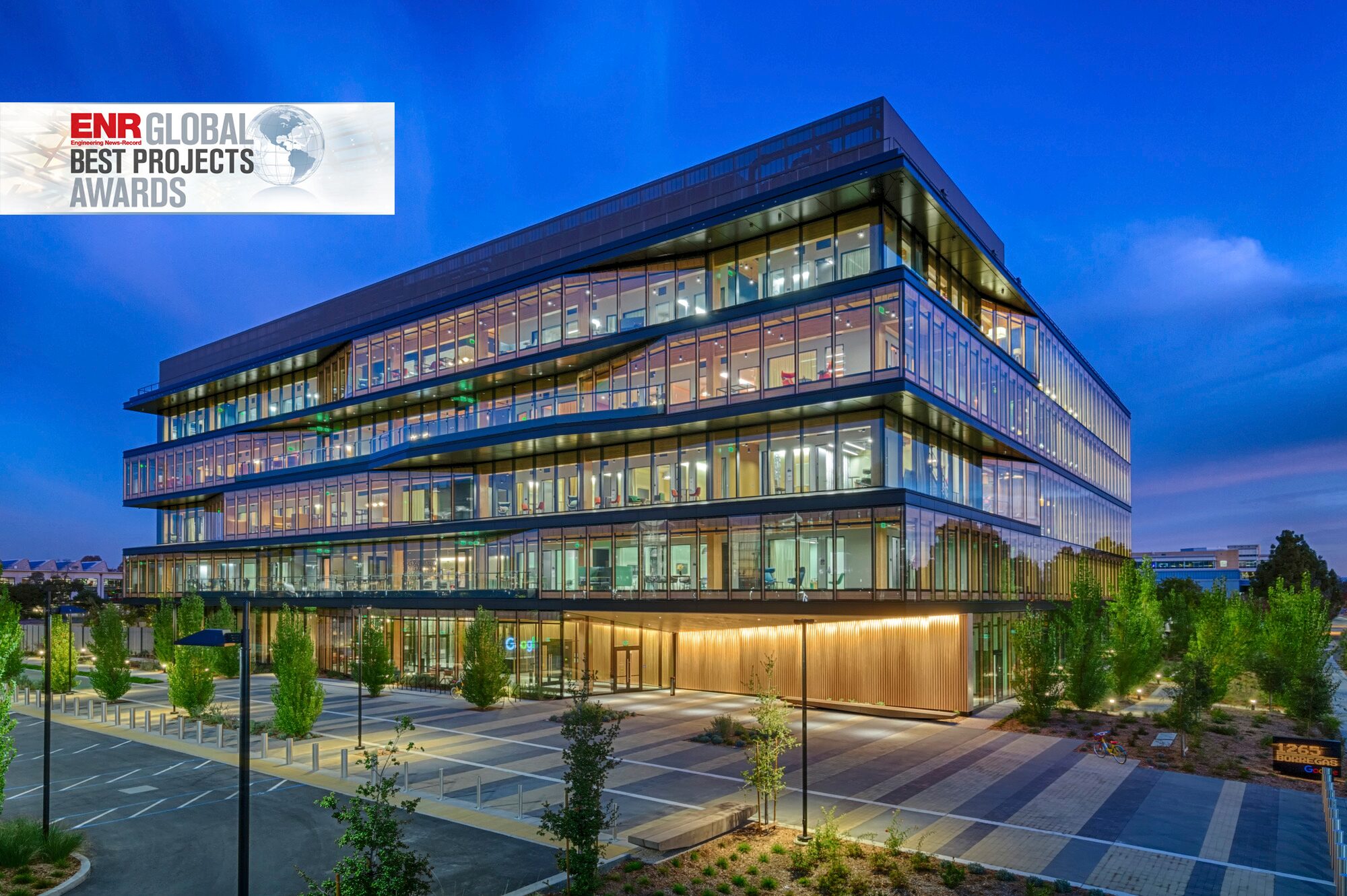Google 1265 Borregas Won ENR’s Award of Merit in the Office/Retail/Mixed-Use Category!
As Google’s first ground-up building constructed from sustainable mass timber material, the project is a high-performance, low carbon building that showcases both sustainable architecture and innovative workplace design.
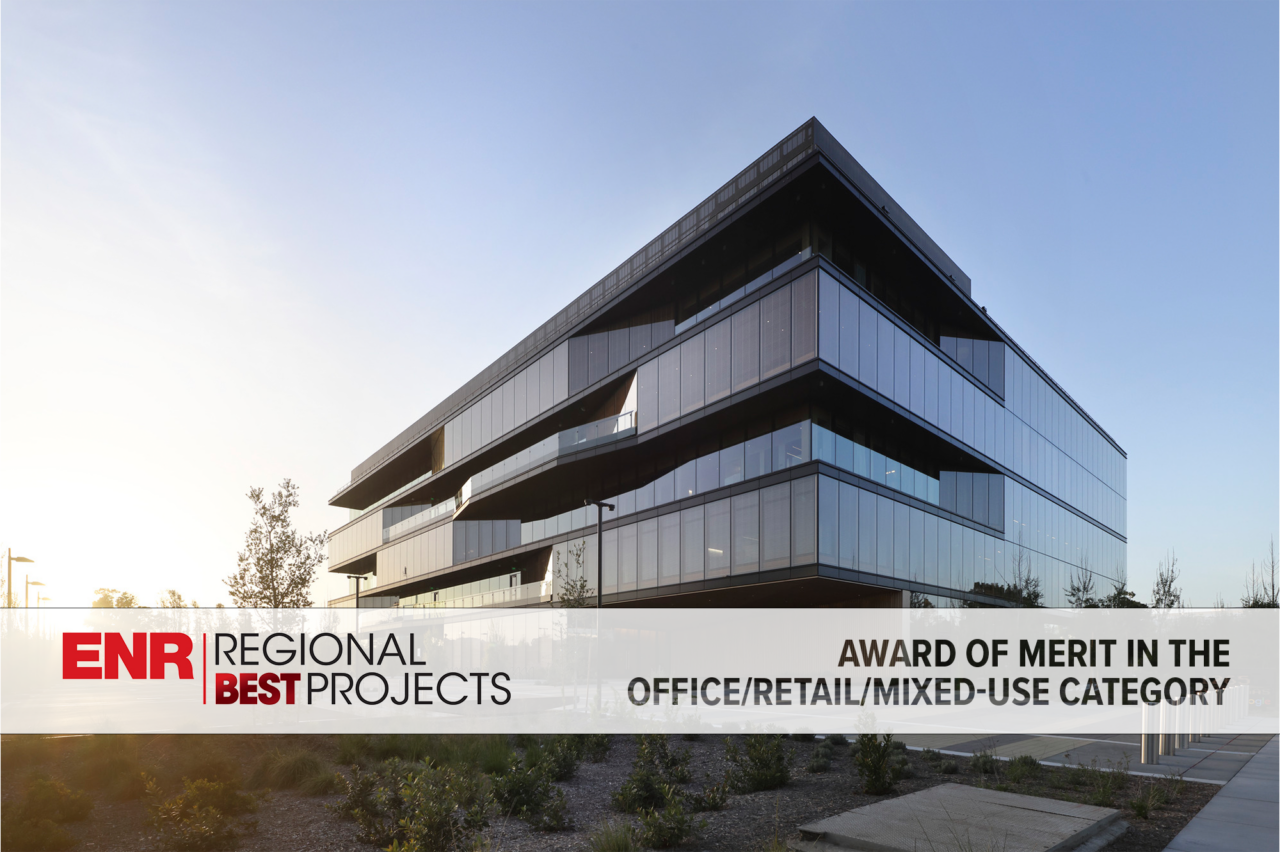
The XL Construction, SERA Architects, and Michael Green Architecture design-build team was thoughtfully assembled by Google, bringing together international thought leaders with a proven ability to collaborate and function as one team. This team set a new standard for biophilic and structural design, construction techniques, material sourcing, and carbon reduction using mass timber. As Google’s first ground-up building constructed from sustainable mass timber material, the project is a high-performance, low carbon building that showcases both sustainable architecture and innovative workplace design.
Mass timber is a new type of engineered wood that involves layering and laminating pieces together. The primary mass timber products utilized were cross-laminated timber (CLT), which is comprised of crisscrossed panels providing lateral stability, and glulam, panels oriented in the same direction to serve as load-bearing structural beams. The material provides environmental benefits due to its regenerative properties and 100% of the structural mass timber for 1265 Borregas was procured from responsibly managed forests certified by the Forest Stewardship Council (FSC). Its wooden columns, beams, and panels have precise notches and slots that can lock in place, resulting in faster assembly and less construction noise and waste.
The design-build team aimed to create a scalable building solution that puts wellbeing and sustainability first. Biophilic design principles, such as exposed wood with daylight and views, were incorporated to promote employee health and a space to do their best work. Importantly, the primary structure is projected to have 96% fewer embodied carbon emissions than an equivalent steel and concrete structure, factoring in sequestration. The LEED Platinum, all-electric building leverages mass timber as a way to dramatically reduce carbon emissions and creates a workspace that supports collaboration, focus, and wellbeing.
“This is a rare project where the process was equally as beautiful as the product.”
Kate Turpin, Director, Programs & Innovation, Global Real Estate, Google, Regarding 1265 Borregas
The design-build team met the required construction dates by planning well in advance. To stay on schedule, the team pre-purchased materials, such as FSC timber, screws, and hardware, and used a timber storage yard for delivery and inspection. Key trades, such as mass timber manufacturers and MEP, were onboarded early. Shop drawings were obtained in advance to prevent fabrication delays, and a detailed BIM model was used for accurate erection and crane efficiency. To protect materials, a water mitigation and suntanning plan was implemented. The team also developed an alternate interior sequence to keep work on schedule, while phased permits allowed inspections to continue without delays.
“The team worked with our team as true partners, offering solutions every step of the way.”
Kathy Popovec, Director, Development Executive, Google
The project employed comprehensive carbon calculations to inform material choices, achieving significant reductions in embodied carbon while enhancing energy efficiency. An FSC-certified mass timber structure was chosen to replace traditional steel and concrete. Because of this, 1265 Borregas is projected to have 96% fewer embodied carbon emissions than an equivalent steel and concrete structure, factoring in sequestration.
Energy efficiency was prioritized through an all-electric design and the closed cavity façade system features weather-controlled shades and a ventilation system to optimize thermal performance. To reduce operational carbon, a rooftop photovoltaic (PV) array generates renewable energy, while daylighting strategies and displacement ventilation enhance indoor air quality and reduce energy use.
1265 Borregas enhances the local community with three acres of pollinator-friendly native plants, including coast live oak, California sagebrush, California wild rose and common milkweed. On the northeast corner of the building, there is public artwork inspired by Atari, which was previously headquartered in this location.
A transparent facade and native landscaping create a welcoming, pedestrian-friendly space, seamlessly connecting to community bike and walking paths to encourage active transportation. 1265 Borregas contributes to the community while expanding awareness of sustainable building practices.
Integration and Collaborative Process
Early stakeholder engagement, including workshops and collaborative sessions, helped embed sustainability, workplace innovation, and cost predictability into the design process. A mass timber mock-up allowed the team to test design strategies, refine construction details, and validate material performance before full implementation. This proactive approach, combined with early material procurement, mitigated supply chain risks and cost fluctuations. Integrated constructability reviews reduced on-site modifications, ensuring smooth execution.
Collaboration continued through construction with site walkthroughs and stakeholder engagement, validating design intent in real time. By leveraging a seamless design-build workflow, the 1265 Borregas team successfully balanced mass timber innovation, sustainability, efficiency, and cost.
“XL Construction has been a thoughtful and diligent innovation partner, including being the builder for Google’s first mass timber office project in the South Bay. We have been working with XL Construction on the new construction methodology as a way to dramatically reduce carbon and waste while creating an extraordinary user experience.”
– Michelle Kaufmann, Architect-in-Residence, Head of R+D for Built Environment, Google
Biophilic Design
The design of the core, shell, and interior set rigorous goals for indoor environmental quality and energy performance, aiming to create a workspace that fosters active collaboration, focused work, and wellbeing.
Research suggests people are able to focus and do their best work when surrounded by nature, and this building achieves that principle by keeping the structural timber exposed at the interior and exterior, while maximizing access to daylight and sweeping views of the Northern California landscape. Automatic wooden blinds adjust to the sun’s position and minimize glare, and an underfloor air system provides optimal comfort.
The south side of the building features five stories of collaboration and amenity spaces, while the north side features double height ceilings to optimize natural daylight and views. They are united by a central lightwell and feature stair – a focal point that draws natural light into the interior and enhances connectivity and intuitive wayfinding.
The building features neighborhood spaces designed to support active collaboration, hybrid connections, and heads-down focus work. Employees can shift between spaces depending on where they do their best work.
Source: ENR
Keep up to date with our latest news and industry insights.
